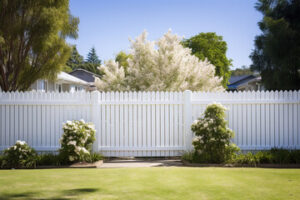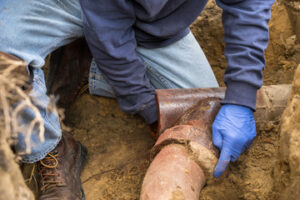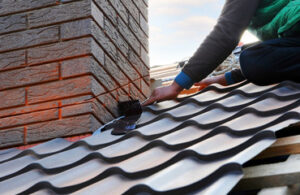A fence can help obstruct prying eyes and annoyances from outside your home, as well as keep pets and kids safe. It also adds value to your property and increases security.

Some fencing materials may require regular maintenance to extend their lifespan. For example, steel fences may rust if not properly treated with protective coatings. Contact Charlotte Fence Company for professional help.
A quality fence is more than just a property boundary; it enhances the curb appeal of your home. In order to install a fence that will last, it is important to use the right materials and follow proper installation techniques. A reputable fence company can offer insights into the best options for your home and provide expert installation services. In addition to their experience, a fence company can save you time by handling the planning and obtaining necessary approvals for your project.
A fence company’s installation process begins with a meeting to discuss your goals for the project. They will learn about your needs, preferences, and budget to design a fence that meets your expectations. They will also review local zoning regulations and homeowners’ association rules regarding fencing construction. This is a critical step that often requires the help of a professional to ensure compliance with all guidelines and to avoid costly fines.
Once the fence style and material are selected, they will prepare the work site by clearing the area of vegetation and debris. They will then dig post holes and set the posts. This is a crucial step that requires careful attention to detail to ensure the posts are securely set and properly aligned. Using a level to ensure the posts are straight and in the correct position will add to the structural integrity of the fence.
Next, the fence company will secure the bottom rail to the posts with a power drill or hammer. They will make sure the bottom rail is parallel to the ground and evenly spaced across the entire length of the fence. They will then use a level to ensure that the top rail is perfectly parallel with the bottom rail, guaranteeing stability and a uniform appearance for your fence.
Once the fence is firmly in place, they will add any finishing touches such as caps on the posts or decorative elements. After the job is complete, the final bill will be issued. It is essential to hire a reputable fence company that is certified and bonded to work on your home. This certification provides you with peace of mind that they have the skills and training to work safely and effectively on your property.
Maintenance
A fence is a crucial asset to any residential or commercial property, whether it’s a beautiful cedar gate protecting the entrance of a luxurious home or a sturdy chain-link structure safeguarding a large industrial site. Regardless of its style, however, any fence requires regular maintenance to ensure it continues serving its intended purpose.
Fences are exposed to harsh weather elements, from rain and snow to sunlight and wind. This exposure causes them to deteriorate over time. Minor issues like rust or rot left untreated can quickly escalate into costly repairs and even structural damage. Regular maintenance, such as staining or painting, can prevent this deterioration and help your fence last longer.
The process of maintaining a fence can vary depending on the material it is made from, as well as the climate where you live. For example, wood fences require more attention than vinyl ones. Wood fences are particularly susceptible to moisture damage, which can lead to rotting and other problems. Moisture penetration is also a problem for metal fences, as it accelerates the corrosion process. Regular inspections and proper maintenance can prevent this from happening, so be sure to check for signs of moisture permeation such as stains and discoloration on the surface.
In addition to preventing damage, regular maintenance can protect your investment. Fences are not cheap, and taking care of yours will help extend its lifespan and protect the money you initially invested in it. It is also a good idea to regularly inspect your fence for pest infestations, as these can be extremely damaging to the integrity of your fencing.
Regular fence maintenance can also improve your curb appeal and make your backyard more appealing to visitors and potential buyers. If your fence is in need of repair or is outdated, consider investing in a new one that will complement the style of your home and increase its value. A well-maintained fence is a sign of pride, and your neighbors will be more likely to respect and value your property as well. If you’re thinking about selling your house in the future, a well-maintained fence can add a significant amount of equity to the resale price.
Curb appeal
When it comes to curb appeal, the first impression your home makes is crucial. A well-maintained landscape, a welcoming entrance, and attractive house colors all add to the overall value of your property. The fence is another element of your home that can greatly affect its appearance and create a positive first impression. While fences are traditionally seen as practical elements that define boundaries and provide security, a thoughtfully designed and carefully installed fence can elevate your home’s aesthetic. Whether you’re looking for a white picket fence, a sleek metal design, or something more modern and sophisticated, there are many options available to suit your aesthetic preferences and complement your home’s architecture.
A fence company can help you improve your home’s curb appeal by enhancing the aesthetic and ensuring the safety of your family and guests. Their skilled professionals will consider your property’s layout and architectural style when designing a custom fence that will compliment your home. They will also ensure that the materials and construction methods used will be durable and long-lasting.
In addition to improving your home’s visual appeal, a fence company can also boost its value by increasing the amount of privacy and security it provides. This is particularly important if you live in an area with high crime rates or a neighborhood with a lot of foot traffic. A good fence will help deter unwanted guests and reduce the risk of theft or property damage.
Curb appeal is the attractiveness of a property, as viewed from the street, and it embodies the first impression that a homeowner or business owner makes on visitors or potential customers. It encompasses a wide range of factors, including landscaping, front porch decor and lighting, house numbers, and, notably, fencing.
In a real estate market that is becoming increasingly competitive, the impact of curb appeal cannot be overstated. Studies show that homes with a higher level of curb appeal are more likely to sell quickly and at a premium price. The best way to increase your home’s curb appeal is through regular maintenance and updates. Fortunately, these efforts can be affordable and simple with the help of a fence company.
Noise insulation
Noise pollution is a serious problem that can cause stress, sleep disturbance, and hearing loss. A fence can serve as a barrier against unwanted noise, helping you enjoy your garden or backyard without being disturbed. However, it’s important to keep in mind that a fence alone may not be enough to block noise completely. You’ll also need to take other measures, including combining them with landscaping elements and regular maintenance to create a peaceful outdoor environment.
The first step in constructing a soundproof fence is to assess the level and type of noise you want to reduce. This can be done by using a sound meter or checking online maps and websites that show average noise levels in specific neighborhoods and areas. This will help you plan your fence construction and determine which material would work best for your needs.
Metal fences are often effective at reducing noise because of their density and weight. They can be built as the primary structure or added to existing fences to improve their noise-reducing capabilities. A metal fence that is layered with corrugated acoustic foam can be particularly effective at blocking noise. However, it’s crucial to inspect your fence regularly for damage, cracks, and leaks as these will impact its ability to reduce noise.
A wood fence can offer some degree of noise reduction, especially if it’s planted with thick foliage like trees or hedges. However, these aren’t as effective at reducing high-frequency noises such as engine and exhaust sounds or music systems. You’ll likely need a specialist acoustic membrane to reduce these types of noises.
Another option is to add sound-proofing materials to your fence, such as sound blankets or mass-loaded vinyl. These are effective because they absorb and dissipate noise rather than reflecting it. However, these materials must be added between layers of your fence and may require renovations to install.


